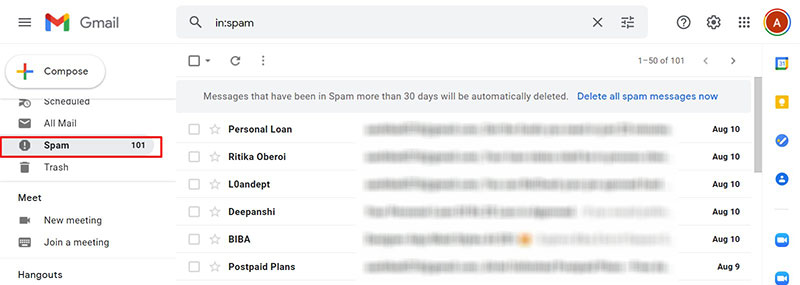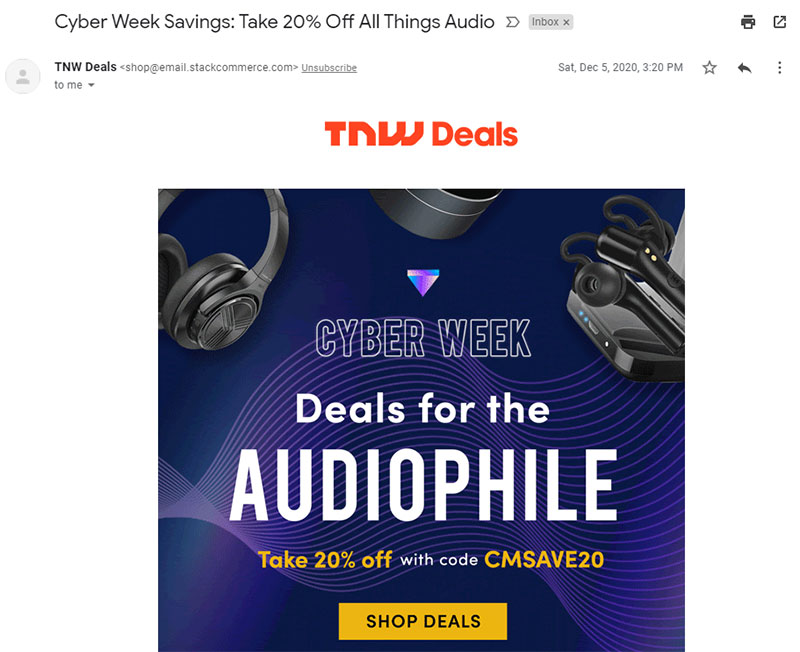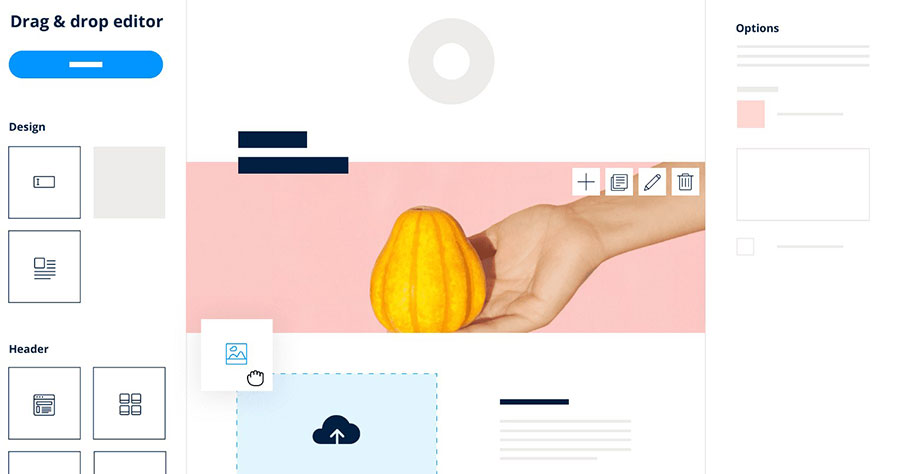Internet service providers (ISPs) are waging a valid war against spammers. The email inbox is one of the battlefields where they take a firm stand against the enemy.
Unfortunately, some innocent civilians get caught in the crossfire. ISPs try to block spam emails, but at times, good-willed email marketers also get blocked.
Due to lack of experience, email marketers can lose out on greater email engagement. This occurs if spam filters send their emails to the junk folder.
Learning how to avoid the spam folder and get past spam filters is vital to maximize email campaigns. Getting past spam filters means more recipients open, click on, and engage with emails.
How do spam filters work and how can one avoid them? How can marketers ensure that emails arrive in subscribers’ inboxes?
This guide discusses the factors that play a direct role in emails finding their targets. It also looks at how to increase email deliverability.
How Do Spam Filters Work?

The purpose of spam filters is to block emails with malicious content.
They review every message sent to an email address and grade it. Based on the grade, it either delivers it, blocks it, or puts it in the spam folder for the user to decide.
Spam filters use a long list of criteria to determine whether a message is spam or not. They weigh each factor and assign an email with a spam score.
This score determines whether the email passes through the filter.
If a marketer's emails get a high spam score, their email will go straight to the junk folder. As a result, it is never seen by the intended recipient.
There are many different types of spam filters. The email service itself may provide them, others are set up by the recipient.
The following are the different types of spam filters:
- Header filters
- Content filters
- Language filters
- General blacklist filters
- Rule-based filters
Header filters review the headers of emails for suspicious content. Content filters review the content for specific words or patterns common to spam emails.
Language filters block emails that are not in the recipient’s native language. Blacklist filters block emails that come from known spammers.
Rule-based filters are set up by the recipient to block emails that are of no value to them.
How To Avoid Spam Filters as a Marketer
So that is how do spam filters work. But how can marketers avoid them?
Multiple factors determine whether an email is flagged by a spam filter. They include:
- The “from” field
- The IP address
- Sending rate
- Subscriber list
- Subject lines
- Content
The “From” Field

The first aspect that a spam filter analyzes is the source of an email. Spam technology examines the domain name and IP address.
This allows them to determine whether an email is legitimate or malicious.
Recipients often look at the “from” field as well to see whether or not they want to open an email. If recipients do not recognize a “from” field, they will likely delete the email.
Worse yet, they might mark the email as spam. Those actions have a negative effect on a marketer's reputation in the eyes of spam filters.
So the very first thing a marketer should address is the name that appears in the “from” field of an email.
Avoid spam filters by:
- avoiding frequent name changes as this signals shady dealings to spam filters
- avoiding obscure names such as "1665bdj8@domain.co" or "noreply@domain.com"
- using trustworthy domain names such as "newsletter@", "contact@", "feedback@", or "support@"
- using only a few recognizable, verified, and trustworthy from field names. Build up a good reputation with those field names by sending engaging and solicited emails.
The IP Address

The reputation of an IP address affects email deliverability. Spam filters often block emails that come from an IP address with a poor reputation.
If an IP address has many complaints against it, its emails will most likely be labeled as spam. Have a reliable ESP (email service provider) to avoid this problem.
Reliable ESPs do not use high-risk IP addresses. This means that email providers such as Gmail, Yahoo! Mail, and Hotmail will not block it.
Choose an ESP that only sends solicited emails, bans spammers, and is trustworthy.
Further, make sure you are not a blacklisted sender. Blacklists are lists of IP addresses of known spammers or networks that spammers use.
Enter an IP address at the following links to check if it is a blacklisted IP address:
- SpamCop (SCBL)
- Sbl.spamhaus.org (SBL)
- Passive Spam Block List (PSBL)
- Return Path Reputation Network Blacklist (RNBL)
Sending Rate

Another aspect to consider when striving to improve email deliverability is sending rate. Sometimes emails fail to reach an inbox because of sending too much to the server at the same time.
Sending the same email to an entire contact list may cause problems with delivery. Instead, spread out emails to increase deliverability.
Using a seed email is a free way to monitor the deliverability rate of emails.
A seed email is an email address that a marketer sets up and adds to their mailing list. After sending out an email, check the seed email accounts to see if the email arrived and how it looks.
Set up about five different accounts at each major email provider including Gmail, Yahoo Mail, AOL, and Hotmail. Include those email addresses in the mailing list.
After sending an email, log in to those accounts to see if it was successfully delivered to that provider.
Subscriber List

Spam filters look at email engagement when deciding whether to deliver an email or to flag it as spam. If your emails are receiving low engagement rates, they will end up going to the spam folder more and more.
What are ways to increase email engagement rates? Here are a few:
1. Only send emails to those who want to receive them
Even if a mailing list consists of customers, make sure that they want to hear from you. Get permission to send them emails first.
To get permission:
- add a sign-up form to the website
- ask clients if they want to sign-up for emails after they make an in-store purchase
- offer incentives such as great content, discounts, exclusive offers, and more
Building a quality email list ensures that customers want to hear from you. This will help to improve email engagement rates.
2. Send targeted email campaigns

Do not send the same email to an entire mailing list. Aim email campaigns to a targeted audience that will be most interested in what is on offer.
Doing this will increase the number of people opening the emails. As well, fewer people will delete them.
This sends positive signals to email providers. It shows that people want to receive these emails and builds up your reputation.
3. Do not use rented, purchased, or scraped email lists
Rented, purchased, or scraped email lists do not help grow a business. They often provide inactive email addresses, out-of-date information, and recycled spam traps.
Using these types of lists often increases bounce rates and delisting.
Sending emails to people without consent can damage your reputation and your brand. It could even lead to legal ramifications.
Often these lists are harvested which means that they contain spam traps. Those spam traps will send marketers to an email marketing hell that is hard to get out of.
It is best to avoid all these problems and grow an email list organically.
4. Monitor engagement
Little engagement with emails sends a negative signal to spam filters.
Inactive subscribers can damage the reputation of the domain. This, in turn, will damage the deliverability rate.
If some subscribers are not opening, reading, and clicking on emails, take action. Launch a re-engagement campaign or unsubscribe those who do not engage with emails.
Subject Lines

So far this article has discussed what marketers should do before they write an email.
They should acquire a good domain name with a trustworthy IP address. They should also build an organic subscriber list and not send too many emails at one time.
But what should the email itself look like to avoid spam filters? The first step is to write a good subject line.
The subject line creates the recipient's first impression of an incoming email. It can determine whether a user engages with an email or not.
Here are some tips to craft a subject line that draws attention:
- Use a witty and inquisitive phrase
- Do not overdo capital letters. At the most, use all-caps on one word in the sentence, but never capitalize the entire sentence
- Do not use multiple exclamation marks. Creating drama and sensation with exclamation marks is a red flag to spam filters and recipients
Content

Next, focus on the content and formatting of the body of the email. Spam filters flag emails based on the content and images they contain.
Tips for designing the content of an email campaign:
- Have a good balance between text and images. Emails that are all text and no images or all images and no text will appear as spam
- Make the campaign clear
- Design the campaign to encourage engagement
- Embedded flash files or videos might appear like spam
- Offer valuable content
- Provide relevant information
- Maintain a consistent flow of communication with clients. Make sure to send follow-up emails and to re-engage inactive subscribers
Ending thoughts on how spam filters work
How do spam filters work? Spam filters review emails and, based on a long list of criteria, determine whether it is spam or not.
The criteria that spam filters consider include:
- The “from” field
- The reputation of the IP address
- The sending rate of the email
- Engagement rates
- Subject lines
- Email content
For an industry that relies on email campaigns, spam filters can be frustrating. However, there are ways around the difficulties that spam filters pose.
Pay attention to technical issues and make sure to have a clean email list. Avoid spam triggers in subject lines and the main content of an email.
Send engaging campaigns that offer valuable and relevant information. Follow up with clients promptly.
Following these recommendations will build up your credibility. This protects marketers from getting blacklisted.
Focus on the benefits you offer to potential clients. Believe in the value of your service.
Then it will be easier to appeal to people and avoid spam triggers.
Remember the tips listed in this article when organizing and designing email campaigns. Then the emails will land in the right inboxes and grow your business.
If you enjoyed reading this article on how do spam filters work, you should check out this one with marketing for IT companies.
We also wrote about a few related subjects like sales automation software, email marketing automation, the best sales apps, best CRM for Gmail, useful elevator pitch examples, Tesla marketing strategy, sales pipeline stages, email tracking software and sales automation tools.


